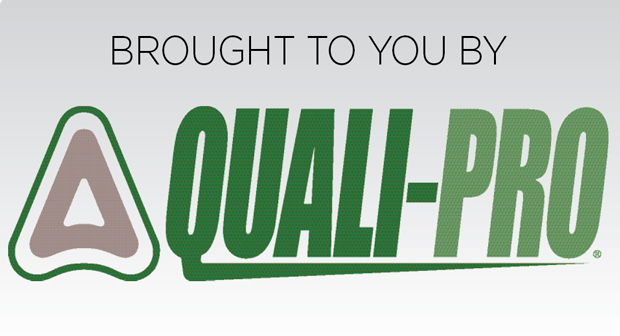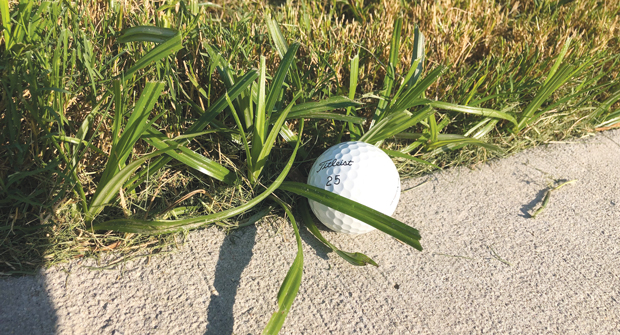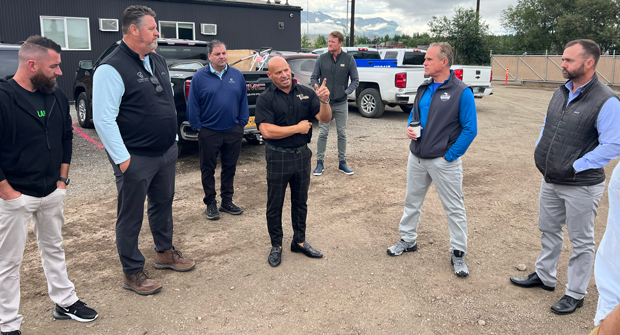Unlike super specific issues or the pests that go away with almost no effort, nutsedge unfortunately falls into a unique category of pest that is both extremely common for lawn care operators (LCOs) yet still very difficult to control.
This aggressive perennial can be found ruining lawns and landscapes throughout North America, usually preferring moist soils. However, once an infestation is established, they are quick to withstand even droughts, hogging the soil’s resources and staying annoyingly resilient.
Nutsedge is difficult to remove because their tubers and underground stems (called rhizomes) survive in the soil even after the leaves die during the cold fall or winter. They can grow up to 14 inches below the soil surface, and new tubers can form four to six weeks after new branches spread and emerge.
Remember the name
Chris Butcher, Quali-Pro Southeast territory manager, says nutsedge is also referred to as nutgrass due to its similarities to various grassy weeds. However, this nickname can be problematic for LCOs.
“Nutsedge is sometimes mistaken for a ‘grassy’ weed because of similar appearance, and many herbicides designed for grassy weed control are ineffective against nutsedge,” Butcher says.
It may sound obvious, but the answer is in the name. Sedges require different treatments to grassy weeds, so correct identification is important.
Nutsedge usually has thicker and stiffer leaves than grasses and are arranged in sets of three at the base. Butcher also says nutsedge grows quicker than grasses, making them look gaudy and stand out in an otherwise well-maintained lawn.
A colorful conundrum
On top of identifying nutsedge from other weeds, LCOs need to identify which kind of nutsedge they’re dealing with. The two most common kinds are yellow nutsedge (Cyperus esculentus) and purple (Cyperus rotundus), which is important for knowing the best herbicide to use.
While the two species often grow together, yellow nutsedge can be more common due to its higher cold tolerance with purple nutsedge being more vigorous. Butcher says they can differ slightly by seedhead color, height and leaf shape.
For example, yellow nutsedge can have a lighter green to yellow color with tannish seedheads while purple nutsedge can be darker, shorter and have reddish-purple seedheads.
Fighting back
You’ve identified a nutsedge invasion and you know what species you’re dealing with. So, now what? Well, Butcher recommends first ensuring you utilize proper turf maintenance and irrigation to maximize the efficiency of treatments.
“Timing nutsedge applications postemergent is more effective when plants are young, the correct herbicides are applied and soil moisture conditions are adequate,” Butcher says. “Applications during drought and extreme heat may lead to inadequate control.”
Active ingredients such as halosulfuron, bentazon (better for yellow nutsedge) and sulfentrazone can be successful options for postemergent treatment, and Butcher recommends sticking to trusted brands and products for more guaranteed results.
Quali-Pro has two products, Sedgemaster and Expel, that he recommends for sedge control.
“Sedgemaster and Expel do an excellent job of controlling nutsedge and other weed species. Sedgemaster (powered by halosulfuron) is a Group 2 herbicide that inhibits amino acid formation,” Butcher says. “Expel (powered by sulfentrazone) inhibits PPO enzymes in nutsedge. Expel and Sedgemaster have separate modes of action, which is important to Integrated Pest Management programs when chemistries are rotated to prevent herbicide-resistant weeds.”



